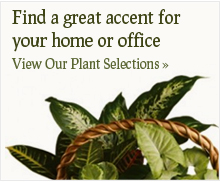Endless Summer Hydrangeas
Friday, March 4 | Gardening Info
How to grow Endless Summer Hydrangeas
(From endlessummerblooms.com)
Endless Summer® produces spectacular pink or blue blooms depending on the make-up of your soil. If you don't know the pH content of your soil, ask your garden center for a soil testing kit. Alkaline soils, pH 6-7, will produce pink blooms. More acidic soil, 5-5.8, will turn your blooms blue. To lower the soils pH, add a soil acidifier to the soil before planting. Follow the directions on the package to encourage blue blooms throughout the season.
To encourage rebloom, remove spent flowers. Because Endless Summer® blooms on new growth, you don't have to wait until the next season to see armfuls of new blooms.
Northern Climate Winter Care
To ensure overwintering success in the first year, the following is recommended:
- Stop all applications of fertilizer after August 15th to acclimate the plant for winter.
- Keep the soil moist through the fall months until the ground is frozen.
- Cover the plant with a four-inch layer of organic mulch (wood mulch, leaves, etc.). There is no need to cover all stems to the tip or to cut them back.
- Covering should be done when fully dormant (around November 30th), or at the same time you would cover perennials in your garden.
- In spring uncover with your perennials when the ground is no longer frozen. The plant will grow from the base of the plant and also from any old branches that survived winter.
- Be patient. Growth will come slowly until the heat of late spring stimulates the plant to grow faster.
- Once you see growth you can prune back the old branches to a finger width above the new green growth.
- Sit back and watch your plant grow and bloom, which depending on your climate should be some time around the middle of July.
Pruning
Endless Summer® Hydrangea is very forgiving and will not suffer if left unpruned or pruned at the wrong time. In fact, young, recently planted shrubs are best left alone. Unlike other Hydrangeas, your Endless Summer® will bloom on both old and new wood, branches that grew last year and the new branches from this year. Another unique feature is that this hydrangea will continue to set buds and bloom throughout the season; deadheading the spent flowers will encourage this. Feel free to cut the blooms for drying or fresh cut in vases because you will actually encourage the plant to produce more blossoms. Spring is the best time to prune. Many people like to leave the spent blooms on their plant because it adds winter interest. It may also act to insulate the new buds from frost and cold. They should be removed in spring however.
Changing Flower Color
To encourage flowering, we recommend a fertilizer low in nitrogen and high in phosphorus, with a number over 30. For instance an N-P-K ratio of 10-40-10 would be ideal.
Big leaf hydrangeas are unique in that their flowers can change color. The color of hydrangea blossoms depends on the soil's pH and its ability to absorb aluminum at different levels. An alkaline soil produces pink colors. An acid soil produces blue flowers. You can buy a soil pH testing kit to test your soil. It is possible to manipulate the color of hydrangeas, but one word of caution: many people have killed their plants by applying too much aluminum sulfate. More is not better.
Changing to pink
To change from blue to pink you need to change from an acid soil to an alkaline one.
- To help raise your pH you can use dolomitic lime several times a year several time a year. You will have to retest your soil and aim for a pH of about 6.0 to 6.2, if it goes above 6.4 your hydrangea may experience an iron deficiency.
- Use fertilizers with high levels of phosphorus such as 25/10/10. Phosphorus helps to prevent aluminum from being taken up in the plant's system.
- Consider growing them in a large pot where it would be easier to control the pH.
Changing to blue
Lowering the pH of your soil will produce blue flowers with a pH level of about 5.2-5.5. Using a soil acidifier will lower your soils pH for beautiful blue blooms. Tips for success:
- Ask the Garden Center where you purchased your plants for what's recomended to acidify the soil in your area.
- Follow directions carefully on the product you purchase.
- Thoroughly water the plant before adding any acidifier.
- Adding large amounts of organic matter, such as peat moss and composted leaves, will acidify the soil as they break down.
Remember to check the pH of your water. If you are trying to turn your flowers blue and you have hard water, it will be difficult to achieve. Also remember that concrete foundations and walkways tend to leach lime, raising the pH in that area.
Other Methods Include:
- Adding large amounts of organic matter, such as peat moss and composted leaves will acidify as they break down.
- Applying elemental sulfur or iron sulfate. Sulfur works slowly. Iron works more quickly but requires more to work. Applied in recommended rates, it will be safe for your plants.
- Products like Miracid® will help you maintain a lower pH once achieved.
If you are very serious about doing this remember to check the pH of your water. If you are trying to turn your flowers blue and you have hard water, water containing lime, that will not be very beneficial. Also remember that concrete foundations and walkways tend to leach lime, raising the pH in that area.
Drying Hydrangeas for Endless Pleasure
Air Drying
The single most important thing about drying hydrangeas is not which method you use; it's when you harvest them! Fresh, newly opened blooms seldom, if ever, dry well in the open air. It is best to wait until the blooms begin to dry on the shrub. The petals will have faded a bit and feel papery to the touch. At this point, you can cut them, strip off the leaves and air-dry them in a baskets or vase with or without water. If you have the space and the time, hanging them upside down in an airy place out of direct sunlight works well too.
Silica Gel
It is possible to dry fresh blooms in Silica Gel to retain their natural blue and pink colors. Silica Gel is available a most craft stores and isn't a gel at all. It looks like white sand with blue crystals in it. This is an expensive, time consuming method but the results are very beautiful. First of all you'll need a large Tupperware-type container. The entire bloom needs to be suspended in the gel. Always use dry blossoms. Add a base of Silica Gel to the bottom of the container, then holding the bloom upside down, sift in enough of the gel to completely cover the bloom and seal the container. After 4 days, you can gently pour out the Silica Gel onto a newspaper (you can save the gel and reuse it). Now your flower is dried, the colors preserved and ready to use for decorating. Some people like to spray them with hair spray at this point the help preserve them. Other people don't like the slight gloss this adds, so try it on a small one and see what you think.
Cat Litter
Believe it or not, many floral arrangers are now using cat litter in the same way you use Silica Gel. This is a much less expensive way to experiment with drying hydrangeas. Use the finest textured, non-clumping cat litter available.
Dye
For the more adventurous among you, try dying your dried hydrangeas for a special effect. If you have a particular color scheme in your home or you need a specific color bloom say for a wedding, this might be fun for you to try. This works especially well with white blooms but you can of course, dye faded pink blooms brighter pink and make blue flowers bluer. It works the same as dying fabric. Get your dye up to the boiling point and dip your flowers one by one, then hang them to dry. To get a variety of shades you can hold the bloom in the dye for a longer or shorter amount of time. The cooler the temperature of the dye the softer the tint will be. Use lots of newspaper, they'll drip!





